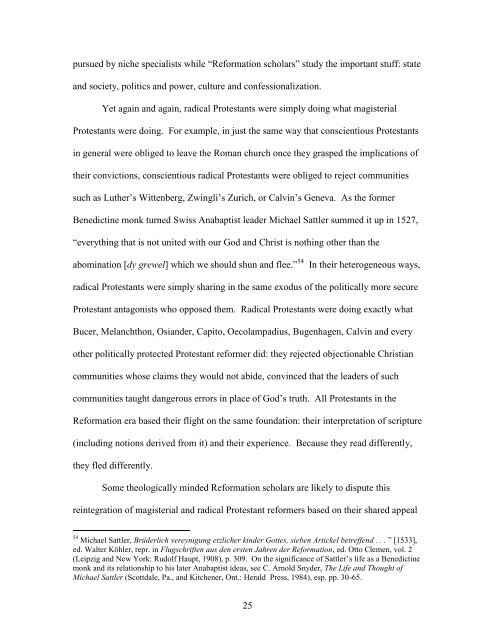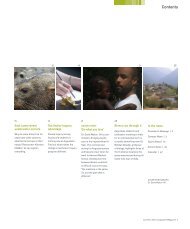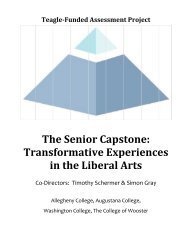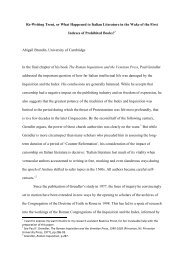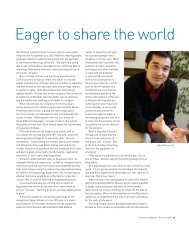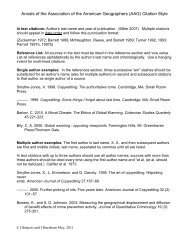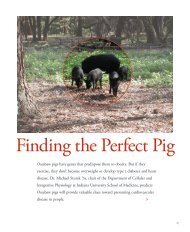Brad S. Gregory - Augustana College
Brad S. Gregory - Augustana College
Brad S. Gregory - Augustana College
You also want an ePaper? Increase the reach of your titles
YUMPU automatically turns print PDFs into web optimized ePapers that Google loves.
pursued by niche specialists while “Reformation scholars” study the important stuff: state<br />
and society, politics and power, culture and confessionalization.<br />
Yet again and again, radical Protestants were simply doing what magisterial<br />
Protestants were doing. For example, in just the same way that conscientious Protestants<br />
in general were obliged to leave the Roman church once they grasped the implications of<br />
their convictions, conscientious radical Protestants were obliged to reject communities<br />
such as Luther‟s Wittenberg, Zwingli‟s Zurich, or Calvin‟s Geneva. As the former<br />
Benedictine monk turned Swiss Anabaptist leader Michael Sattler summed it up in 1527,<br />
“everything that is not united with our God and Christ is nothing other than the<br />
abomination [dy grewel] which we should shun and flee.” 54 In their heterogeneous ways,<br />
radical Protestants were simply sharing in the same exodus of the politically more secure<br />
Protestant antagonists who opposed them. Radical Protestants were doing exactly what<br />
Bucer, Melanchthon, Osiander, Capito, Oecolampadius, Bugenhagen, Calvin and every<br />
other politically protected Protestant reformer did: they rejected objectionable Christian<br />
communities whose claims they would not abide, convinced that the leaders of such<br />
communities taught dangerous errors in place of God‟s truth. All Protestants in the<br />
Reformation era based their flight on the same foundation: their interpretation of scripture<br />
(including notions derived from it) and their experience. Because they read differently,<br />
they fled differently.<br />
Some theologically minded Reformation scholars are likely to dispute this<br />
reintegration of magisterial and radical Protestant reformers based on their shared appeal<br />
54 Michael Sattler, Brüderlich vereynigung etzlicher kinder Gottes, sieben Artickel betreffend . . . ” [1533],<br />
ed. Walter Köhler, repr. in Flugschriften aus den ersten Jahren der Reformation, ed. Otto Clemen, vol. 2<br />
(Leipzig and New York: Rudolf Haupt, 1908), p. 309. On the significance of Sattler‟s life as a Benedictine<br />
monk and its relationship to his later Anabaptist ideas, see C. Arnold Snyder, The Life and Thought of<br />
Michael Sattler (Scottdale, Pa., and Kitchener, Ont.: Herald Press, 1984), esp. pp. 30-65.<br />
25


